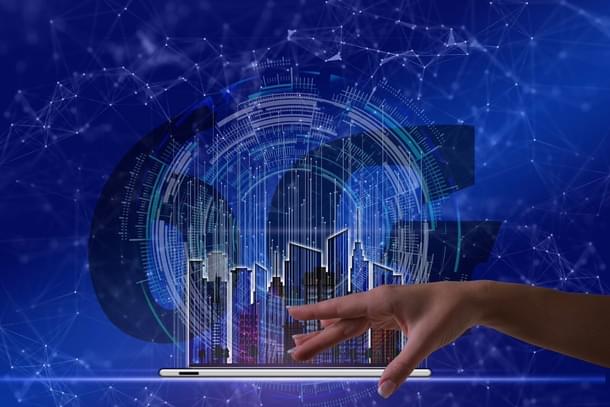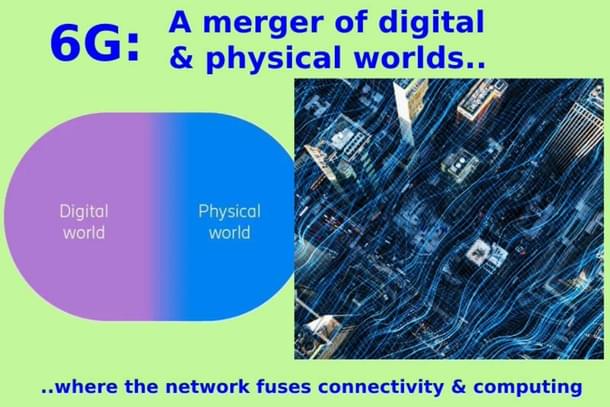Technology
India Primed To Lead 6G Charge? Leading Telecom Network Providers Look To India To Help Create 6G Solutions
Anand Parthasarathy
Nov 04, 2023, 10:45 AM | Updated 10:45 AM IST
Save & read from anywhere!
Bookmark stories for easy access on any device or the Swarajya app.


October saw two of the world’s top telecommunication (telecom) network providers announce new research and development (R&D) centres in India for work on fundamental technologies in 6G, as well as some innovative use cases.
Nokia announced on 5 October that it has established the 6G Lab at its global R&D centre in Bengaluru to leverage 6G and address the future needs of both industry and society.
The Lab, inaugurated virtually by the Minister for Electronics and Information Technology, Ashwini Vaishnaw, will facilitate research on a key enabling technology of 6G: ‘network as a sensor’.
This technology will enable the 6G network to sense objects, people, and movement without the need for onboard sensors. And it will help fulfill the vision of bringing the digital and physical worlds together.
Nokia will also collaborate with premier research institutes in India, like the Indian Institute of Science (IISc) and the Indian Institutes of Technology (IITs), to scale up the 6G research initiative in India.
On 28 October, on the sidelines of the India Mobile Congress in Delhi, Ericsson announced that it was launching an ‘India 6G’ programme by setting up a research team at its Chennai R&D centre.
The team will work in the areas of radio, networks, artificial intelligence (AI), and cloud, and will help the company develop fundamental solutions for the future of telecommunications, collaborating with similar teams in Sweden and the United States of America (US).
Ericsson has already inked a five-year partnership with the interdisciplinary Centre for Responsible AI (CeRAI) at IIT Madras. The company currently operates three R&D centres in Chennai, Bengaluru, and Gurugram.
Why are telecom majors looking towards India for their fundamental and applied research requirements, leading to the eventual global rollout of 6G on mobile phones and other connected devices in 2030?
One of the reasons could be the burgeoning ecosystem of startups, government and private labs, and educational institutions in the country where work on 6G has already started.
Unlike 5G, where India was somewhat of late starter and had to play catch-up to roll out services, preparatory work on 6G has already begun: the government released the 'Bharat 6G Vision' in March this year so that the nation could be a frontline contributor in the design, development, and deployment of 6G technology, rather than just a consumer.
The Telecommunication Engineering Centre (TEC), the technical arm of the Ministry of Communications, has led India’s standardisation work on the 6G framework.
A National Study Group (NSG), headed by the TEC, has regularly submitted Indian contributions towards the development of the global 6G framework to the International Telecommunication Union (ITU), the specialised agency for Information and Communication Technologies of the United Nations.
The ITU accepted the draft 6G framework on 22 June 2023, and Indian experts played a key role in its drafting.
This is why the Bharat 6G Vison document dovetails nicely with the ITU 6G framework, now to be known as IMT-2030, and embraces the same principles of affordability, sustainability, and ubiquity.
What Is 6G?

With every generation of communication technology, the focus of the network has changed.
2G and 3G provided human-to-human communication through voice and text. 4G saw a shift to data, while 5G turned its focus on connecting the Internet of Things (IoT) and industrial automation systems.
6G is the sixth generation of cellular networks, which promises to deliver truly omnipresent wireless intelligence.
The vision is to create a seamless reality where the digital and physical worlds, as we know them today, merge with the human world.
This merged reality of the future will provide new ways of meeting and interacting with other people, new possibilities to work from anywhere, and new ways to experience distant places and cultures.
And the network itself will compute even as it connects.
How is 6G different from 5G?
While being built on the foundations of 5G, 6G will take us much deeper into connected intelligent machines, programmable physical worlds, and an Internet of Senses.
In a note explaining 6G, Nokia says: "While the smartphone will remain a key device in the 6G era, new man-machine interfaces will make it more convenient to consume and control information.
"Touchscreen typing will gradually get replaced by gesture and voice control. Devices will come embedded into clothing and even transform into skin patches. Healthcare will be an important benefactor as wearables facilitate 24/7 monitoring of vital parameters."
Network As A Sensor
A network that can sense its surroundings is central to the 6G experience, and Nokia has already stated that its India R&D team will work to progress this most notable aspect of 6G: its ability to sense the environment, the people, and objects.
“The network becomes a source of situational information, gathering signals that are bouncing off objects and determining type and shape, relative location, velocity and perhaps even material properties.
"Such a mode of sensing can help create a “mirror” or digital twin of the physical world, thereby extending our senses to every point the network touches.”
What will the world be like with 6G?
In its document 'What is 6G', Ericsson envisions a connected and sustainable physical world, where humans are supported by intelligent machines and the Internet of Senses.
“Examples of important 6G use cases include e-health for all, precision health care, smart agriculture, earth monitor, digital twins and robot navigation. These use cases can be sorted into three broad use case scenarios: the Internet of Senses, connected intelligent machines, and a connected sustainable world.”
And yes, speeds will improve. Compared to 5G, where top speeds hover around 20 GBPS, experts suggest 6G could deliver 100s of GBPS and possibly even touch 1,000 GBPS.
But zippy data speeds aside, all indications are that 6G will offer a radically new human experience, where everything around us is connected — to each other and to us.
And this time India will be there at the starting gate.
Anand Parthasarathy is managing director at Online India Tech Pvt Ltd and a veteran IT journalist who has written about the Indian technology landscape for more than 15 years for The Hindu.





